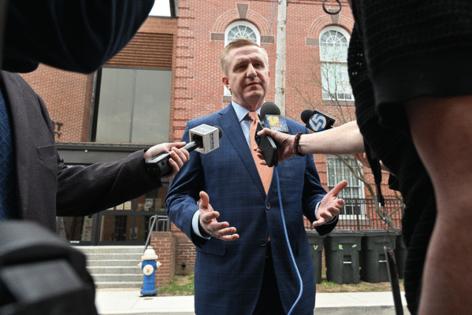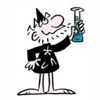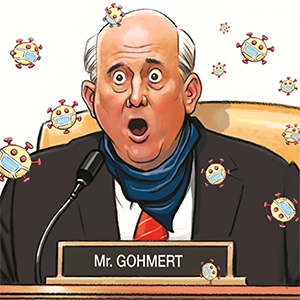Rachel Morin case: Experts discuss what goes into choosing jurors for a high-profile murder trial
Published in News & Features
BALTIMORE — It took just two days to seat a jury in the trial of the man accused in the 2023 killing of Rachel Morin, despite concerns from lawyers on both sides about pre-trial publicity and potential juror bias. The case became a political talking point in the immigration debate during the 2024 presidential race.
Victor Antonio Hernandez-Martinez, 24, of El Salvador, who police say entered the United States illegally two years ago, is charged with first-degree rape and first-degree murder in the death of Morin, 37, a mother of five. Morin was found dead after disappearing in August 2023 on the Ma & Pa Trail in Bel Air. Family members have called her death “among the most brutal and violent offenses that has ever occurred in Harford County, Maryland history.”
The trial took a day off Thursday and is expected to resume Friday at 9:30 a.m. with opening statements and presentation of evidence.
Jeffrey Frederick, a social psychologist in Virginia who specializes in analyzing jury selection and the impact that factors such as pre-trial publicity have on the process, said, “in a case like this that has substantial publicity and has become a political fire point, there are a lot of red flags to look out for in potential jurors.”
“When they go into jury selection, both sides really have to know who they do not want on the jury,” he said.
On the first day of jury selection, Tuesday, 124 potential jurors were questioned in a group about personal bias, whether they knew about the case and how they felt about the charges and allegations. Later, outside of public view, defense attorneys and prosecutors individually questioned them until 7:45 p.m., eliminating 59 — a process Frederick said was intentionally thorough because of the case’s publicity.
Both sides will look for jurors who are “open-minded,” Frederick said, and those who think based on facts and evidence rather than beliefs and feelings.
Frederick said Martinez-Hernandez’s defense team, composed of three public defenders, would have looked to eliminate anyone politically conservative because of the case’s political ties to President Donald Trump. Martinez-Hernandez entered the United States illegally in 2023, turning the case into a political talking point about immigration policy.
Katherine Canto, chief executive officer of Canto Legal Immigration Attorneys in Towson, said the biggest challenge in criminal cases involving immigrants is bias. In her experience defending immigrants in criminal cases, she said the goal is to ensure the client receives fair treatment and is judged on facts, not on their background, accent or immigration status.
“That’s the foundation of due process,” Cantos said. “Whether from juries in criminal cases or from the broader social and political environment — misconceptions about immigration law, media narratives and national rhetoric can influence how immigrants are perceived, even before they’ve had a chance to present their case.”
When questioned in a group, almost all potential jurors said they had heard about the Morin case. Frederick said lawyers likely went more in-depth with each juror during individual questioning, trying to understand where potential jurors had heard information on the case, and how they may feel about what they heard.
“The research on pre-trial publicity shows that damaging publicity does influence jurors, increases beliefs in guilt and increases conviction rates,” Frederick said.
He said a defense team migth use individual juror questioning to “dig deeper” into beliefs potential jurors have about crime and the government and an ideal juror would be one who indicates they would require the prosecution to prove their case beyond all reasonable doubt.
“If you’re a defense attorney in this case, you want a juror who has not made up their mind and that forces the government to really prove their case,” Frederick said. “With a case like this, they would probably look to remove people like conservatives since they tend to be against immigrants and they may even want people who fear crime or people who have been a victim of crime.”
Frederick said prosecutors would seek to eliminate from the jury politically liberal individuals who are critical of immigration policy and the justice system.
“What they are looking for is to identify the red flag jurors who are critical of the government or have views that indicate bias,” he said. “They may want to remove people who may be critical of their case because of, say, a negative experience with law enforcement, for example.”
The jury panel in this case appears to be made up of 10 men and two women, including two people of color. The six alternates include four men and two women, with three being people of color. It was unclear if any member of the jury had a Latino background.
Frederick said the composition of the jury is not indicative of the defense or prosecution and is mainly related to the population of Harford County.
Census data indicates Harford County has about 261,000 residents — 14,007 of whom are Hispanic or Latino.
“You’re not entitled to have a jury of your peers, in the sense that each jury should mimic the population, it is just a requirement to have the venue for selection to be reflective of the area you’re in,” he said.
----------
©2025 The Baltimore Sun. Visit at baltimoresun.com. Distributed by Tribune Content Agency, LLC.







Comments